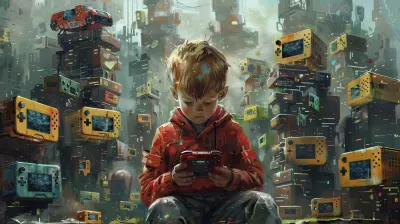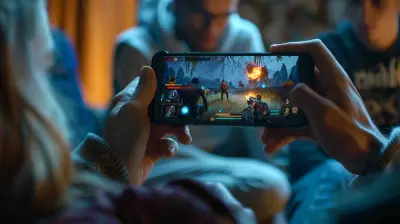A Trip Back in Time: What It Was Like to Game in the 80s and 90s
12 October 2025
Ah, the 80s and 90s! A time of big hair, neon colors, and—most importantly—some of the most iconic gaming experiences ever. If you're a gamer today, you're probably used to ultra-realistic graphics, online multiplayer lobbies, and instant downloads. But back in the day? Oh boy, gaming was a completely different beast. Let’s fire up our nostalgia engines and take a trip back in time to uncover what it was really like to game in those rad decades.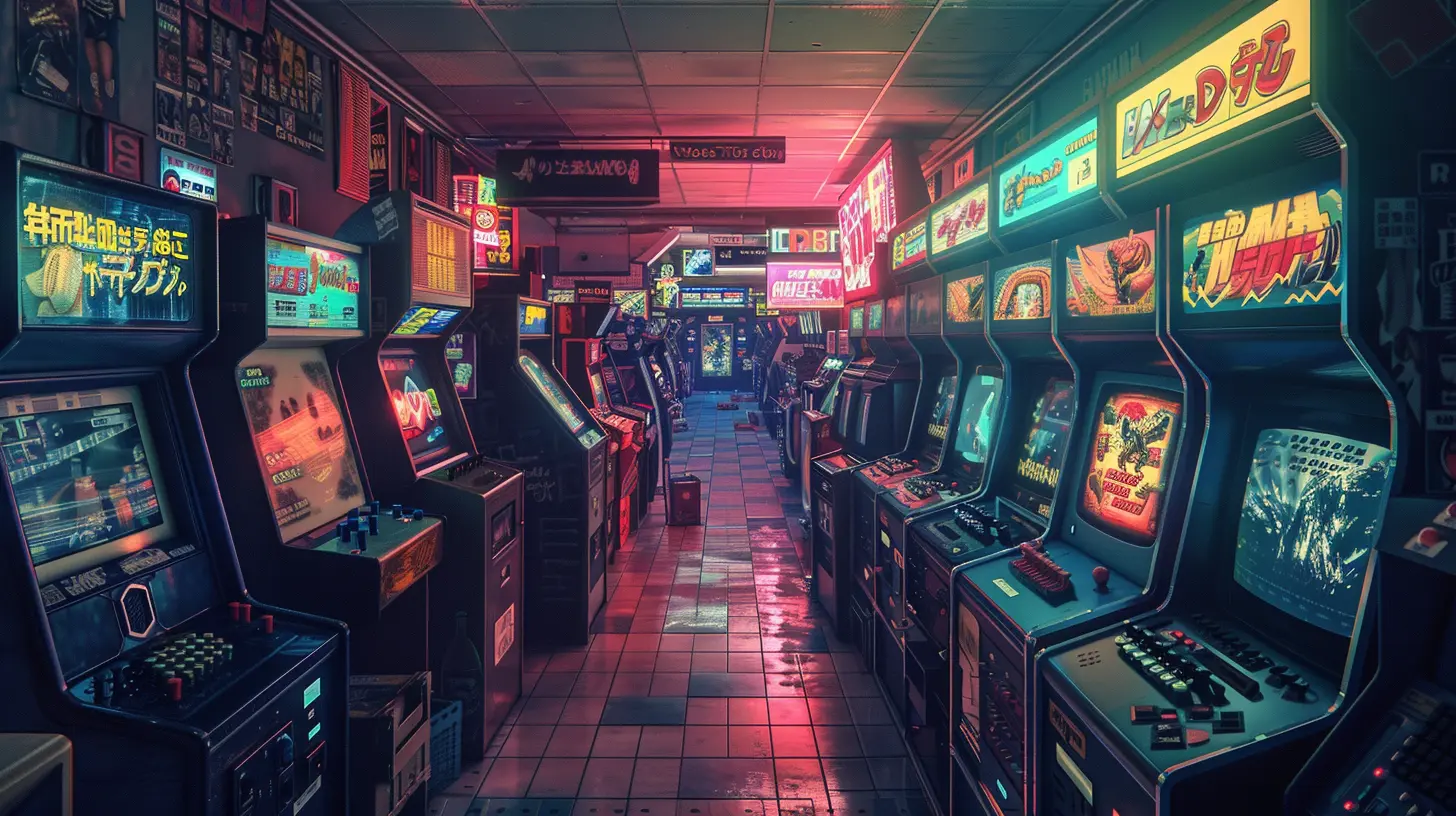
1. The Golden Age of Coin-Operated Arcades
Before gaming consoles dominated the living room, arcades were the place to be. Picture this: a dimly lit room packed with bulky, glowing arcade cabinets playing electronic sounds louder than a rock concert. Your goal? To vanquish Donkey Kong, fight off space invaders, or win a round of Street Fighter II—all while trying to make your quarter last as long as possible.Back then, you didn’t just play games—you competed. High scores weren’t just numbers on a leaderboard; they were a badge of honor. If your initials—whether it was your real name or something silly like “ASS”—made it to the top of the leaderboard, you were practically a local legend. And let’s face it, nothing felt cooler than beating the kid next to you in a head-to-head match while a crowd cheered you on.
But, man, was it expensive! Those quarters added up fast, especially if you sucked at a game. It wasn’t uncommon to blow through an entire week’s allowance in one afternoon of gaming glory.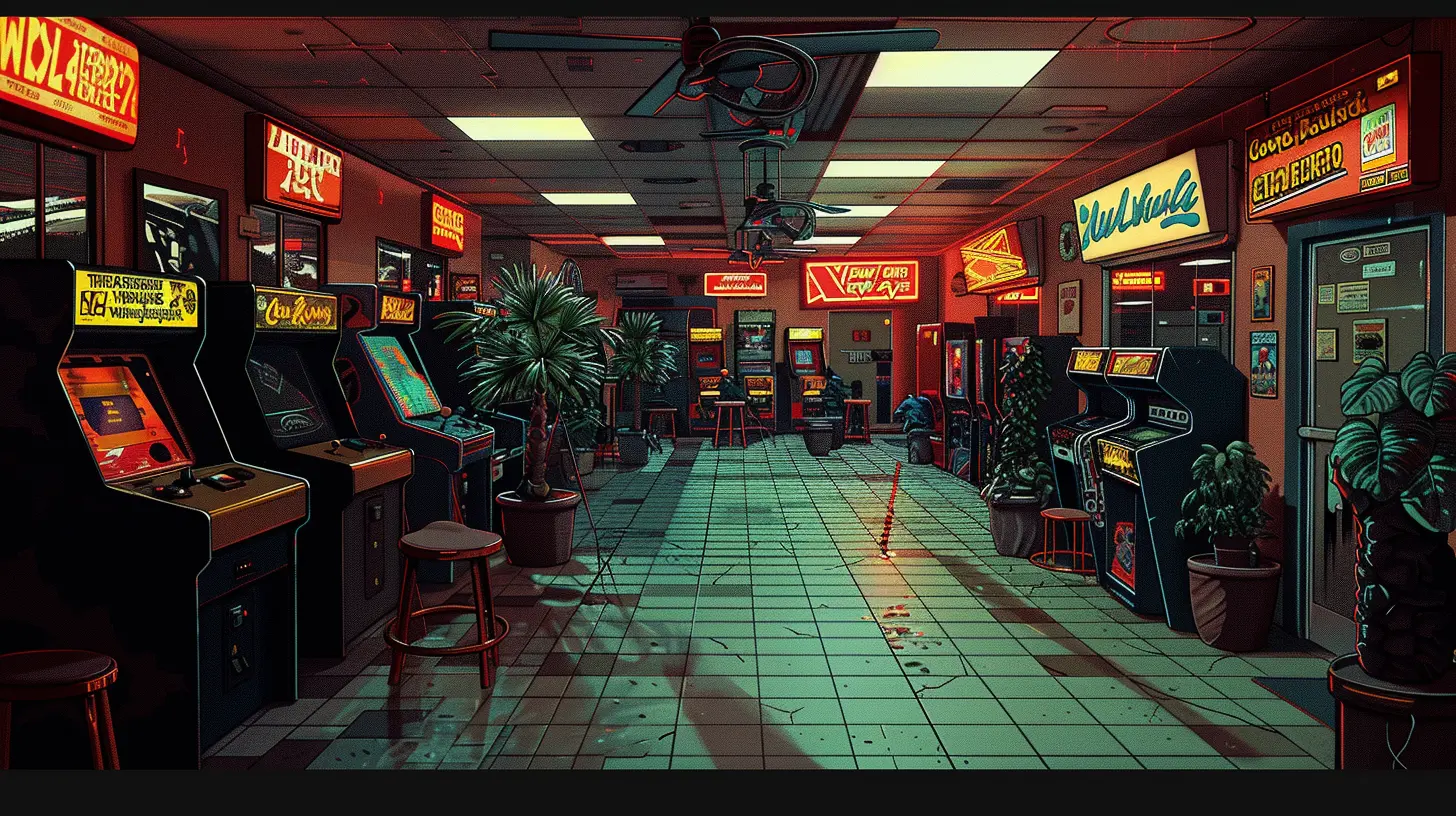
2. Consoles and the Dawn of Home Gaming
If arcades were the public spectacle of gaming, consoles brought the experience into the living room. By the 80s, the Atari 2600 had started it all, but it was the Nintendo Entertainment System (NES) in 1985 that truly revolutionized home gaming. Suddenly, you didn’t have to leave the house to stomp on Goombas or rescue Princess Peach.And then came the Sega Genesis. If you were around in the 90s, you probably remember the fierce console wars between Sega and Nintendo. It was like choosing between Coke and Pepsi; you couldn’t like both. Were you Team Sonic or Team Mario? Did you have the SEGA Channel or drool over the latest Nintendo Power magazine? The rivalry was real.
Of course, playing at home had its own challenges. Back then, they didn’t have save points in every game. Nope. If you wanted to beat a game like The Legend of Zelda or Metroid, you either wrote down those obscure passwords or pulled an all-nighter. Power outages? Instant rage. Siblings tripping over the controller cord? A catastrophe.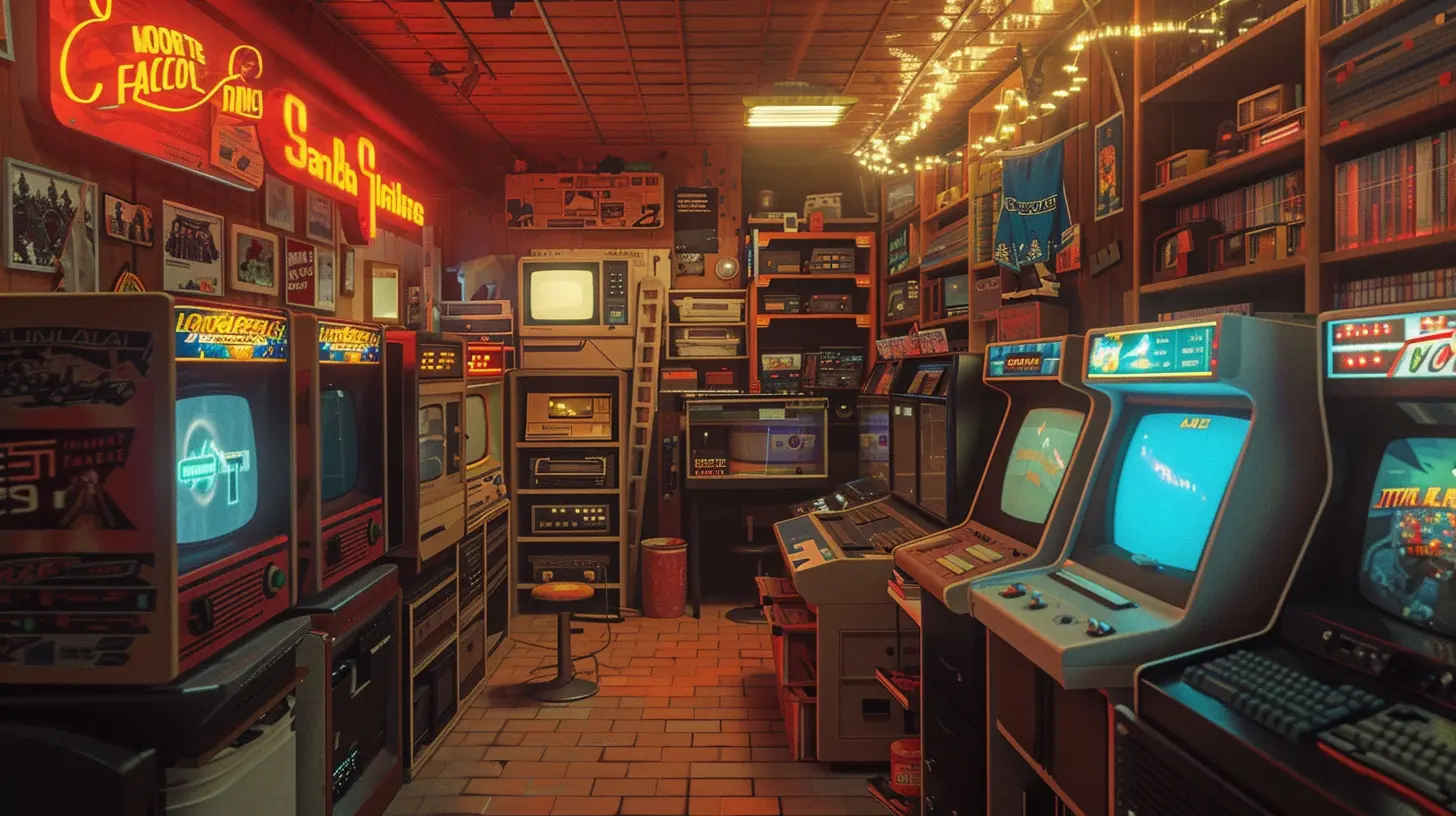
3. No Internet? No Problem (Sort Of)
Imagine gaming without the internet. Yep, no multiplayer lobbies, no YouTube tutorials, and definitely no patches to fix bugs. What you bought was what you got. If a game was impossibly hard, well, you either figured it out or spent days frustrated. Sometimes, you’d luck out and find a cheat code in a gaming magazine, but there was no guarantee it would help. (Who remembers punching in the Konami Code for extra lives?)Speaking of magazines, they were gold. Before the internet, publications like GamePro, Electronic Gaming Monthly, and Nintendo Power were your lifeline to gaming news, tips, and walkthroughs. You’d flip through the pages, dreaming of new releases, while trying to memorize every detail of a guide for beating a boss. It was like a treasure map, and boy, did you guard it like one, too.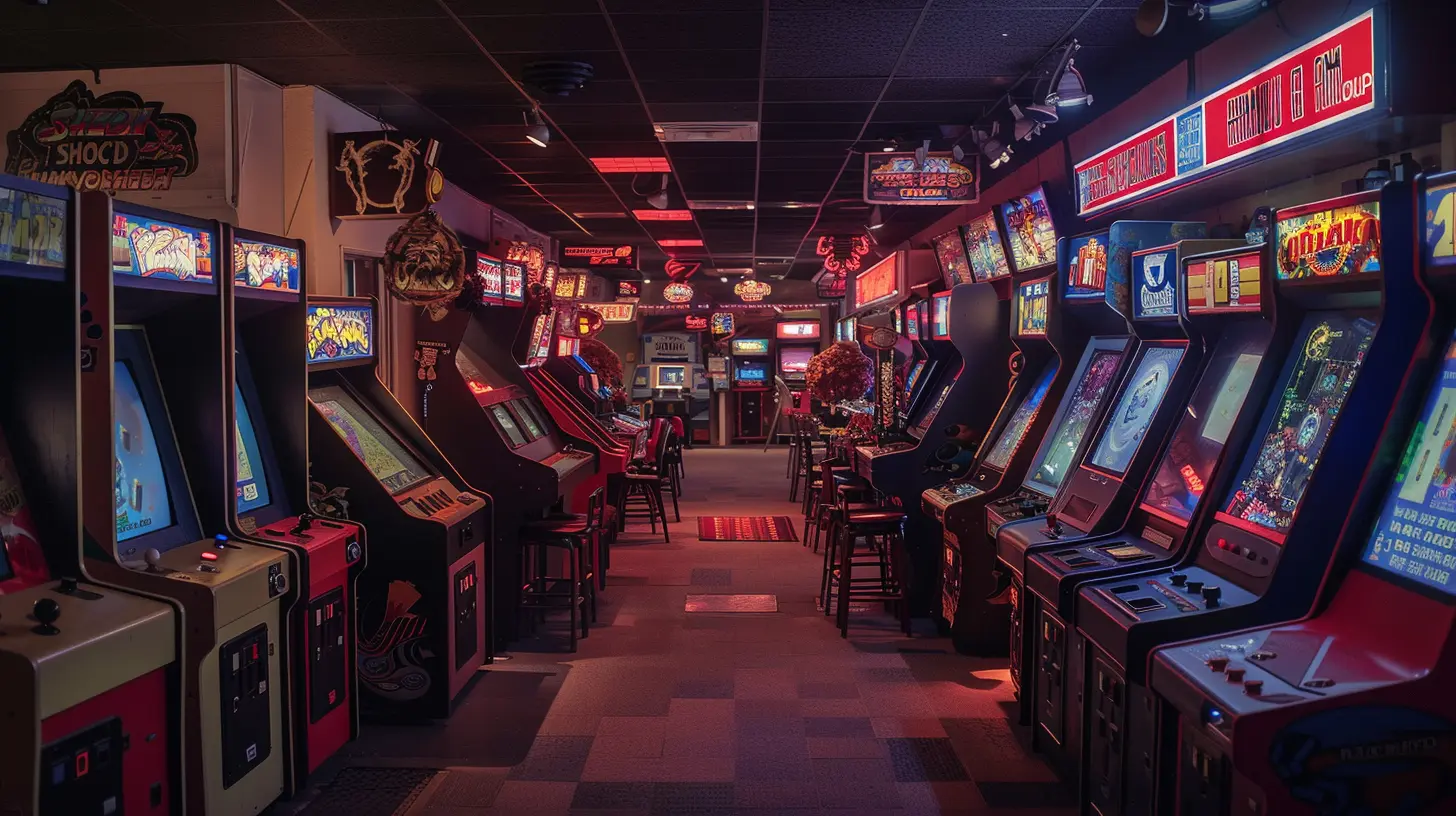
4. Graphics and Sound: It Was Retro Before Retro Was Cool
Let’s not pretend the graphics were anything like what we have now. Back in the 80s and 90s, pixels were king, and we were fine with it. Those blocky characters were bursting with charm, even if they didn’t have facial expressions. Games like Pac-Man and Super Mario Bros. left plenty to the imagination, but somehow, they managed to capture our hearts.And the sound? Bleeps and bloops were the soundtrack of our lives. If you played something like Tetris, that iconic tune is still probably living rent-free in your head. Sure, orchestral scores like today’s AAA games didn’t exist, but those chiptunes had personality. They were catchy, quirky, and built to last—a testament to how simple sounds could evoke huge emotions.
5. Multiplayer Meant You Had to Be in the Same Room
Want to play with friends? Grab your controllers and crowd around the same TV. There was no online matchmaking back then, which meant multiplayer brawls or co-op sessions were hilariously chaotic and deeply personal. Remember sitting shoulder-to-shoulder, trying to sabotage your buddy in GoldenEye 007 or pull off a clutch victory in Mortal Kombat? The trash talk was real, and losing often resulted in heated debates. (“You’re screen watching, bro!”)Splitscreen gaming wasn’t just a feature—it was the feature. It didn’t matter if the screen was tiny or if your friend kept leaning in front of you to block your view. What mattered was the camaraderie (or rivalry). And when someone got mad enough to yank their controller out of the console? Game over. Literally.
6. The Challenges of Console Life
Let’s talk about the struggles. First off, you had to blow into cartridges like your life depended on it. Did it actually help? Who knows. But it felt like some sort of ancient ritual that summoned the gaming gods to make your system work again.Consoles back then were also temperamental. Wiggle the cartridge the wrong way, and your game froze. Lose the manual? Good luck figuring out what to do, because in-game tutorials didn’t exist yet. And don’t even get me started on tangled controller cords. It was like fighting a mini boss before you even started playing the game.
7. Portable Gaming: The Game Boy Changes Everything
The 90s brought us the Game Boy, and wow, did it level up gaming on the go. The moment you slipped in a Pokémon Red cartridge, you were untouchable. Sure, the screen was tiny, green-tinted, and impossible to see in the sun, but you could play anywhere. In the car, at school (don’t lie, you did it), or under your blanket at night with a flashlight.Your Game Boy wasn’t just a device; it was a companion. Batteries drained faster than soda at a party, but that didn’t stop you from carrying extras everywhere you went. If you traded Pokémon with a friend using that clunky link cable, you were basically performing a technological miracle.
8. The Legacy of 80s and 90s Gaming
Gaming in the 80s and 90s wasn’t just about the pixels and cartridges—it was about community, creativity, and pure joy. It laid the foundation for everything we see today. Many of the franchises from that era (Zelda, Final Fantasy, Street Fighter, to name a few) are still going strong. And even though gaming technology has evolved dramatically, there’s something timeless about those earlier experiences.Today, retro gaming is more popular than ever. Those old consoles are collector’s items, and the games? They’re living proof that fun isn’t about having the fanciest graphics or the fastest processors. It’s about the memories, the stories, and the simple thrill of pressing “Start.”
Conclusion
Gaming in the 80s and 90s was a wild ride. It was a time of discovery, innovation, and pure nostalgia-inducing fun. Were there challenges? Sure. But those quirks were part of the charm. Whether you spent hours at the arcade, struggled to beat a difficult level, or battled your sibling for controller time, one thing’s for sure: gaming back then was magical in its own way.Now, every time you pick up an old console or hear a classic chiptune, you’re not just playing a game—you’re stepping back into an era that shaped the gaming world we know and love today. And honestly? That’s pretty awesome.
all images in this post were generated using AI tools
Category:
Retro GamesAuthor:

Brianna Reyes
Discussion
rate this article
1 comments
Verity Brooks
8-bit graphics, no internet—pure pixelated nostalgia!
October 13, 2025 at 4:19 PM
